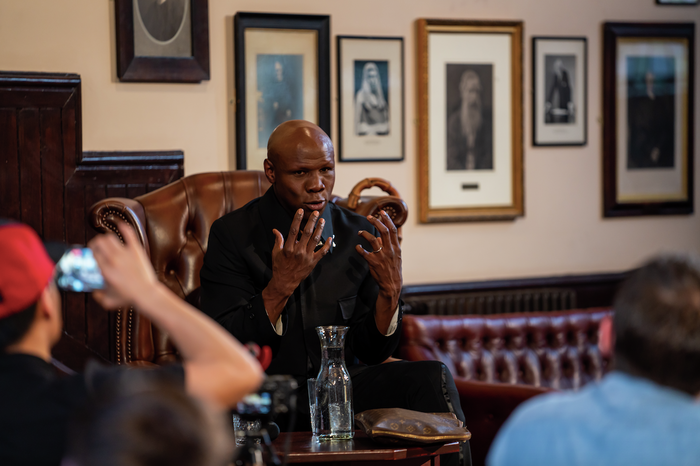Floyd Mayweather vs. Logan Paul: an exhibition of business done right
One month on from the renowned event, Liam Kline considers whether influencer fights are a blessing in disguise for the future of professional boxing

Now that the curtain has been drawn on the fight for “Bragging Rights”, all is now apparently quiet on the men’s boxing front. For hardcore fans, however, Vasily Lomachenko’s first fight back since losing his unified world title to Teofimo Lopez would have been a gripping watch last month (26/06), winning via TKO in the ninth round against Masayoshi Nakatani. Elsewhere, the bout between Jermell Charlo and Brian Castano (17/07) may have sparked some interest, given that all four belts in the super-welterweight division were on the line for the first time in history - needless to say that a controversial split draw was underwhelming. Yet, the ratings for both fights fell safely short of the estimated one million pay-per-view buys of the media-frenzied Mayweather-Paul event, leaving a disparity between merit and viewership in the boxing world.
In order to pinpoint the birth of influencer boxing, attention must turn to the satirical fight between Joe Weller and Theo Baker back in 2017. Dubbed the “World YouTube Boxing Championship”, both men fought each other in a rundown gym with the only spectators being two cameramen and a referee. This was then met by KSI’s seemingly frivolous proposition of “Let me fight the winner”. But six months later, KSI and Joe Weller traded jabs in front of a sell-out crowd at London’s Copper Box Arena and garnered a peak live audience of 1.6 million on YouTube. Demand for watching content creators beat the brain cells out of each other was evident, establishing a gold mine that subsequently stretched to the pockets of those across the Atlantic.
“The real insult to professional boxing is the unfulfillment of viewership demands rather than the savvy initiative of trend-surfing influencers”
KSI vs. Logan Paul was a white-collar amateur boxing match that ko’d the summer of 2018, selling-out 21,000 tickets for the Manchester Arena and generating a total of 1.3 million pay-per-view buys worldwide. This makes it the largest non-professional boxing match of all time. The respective younger brothers, Deji Olatunji and Jake Paul, fittingly occupied the undercard, kick-starting the latter’s professional boxing career that includes victories over a 5’9” former NBA player in Nate Robinson and a washed-up Ben Askren. Using the terms ‘Jake Paul’ and ‘professional boxer’ in the same breath, although factual, is something that consequently fuels the animosity towards such events and draws the claims that they are “bad for boxing”.
Speaking at the Cambridge Union last year, promoter Eddie Hearn discussed his decision to publicise the KSI vs. Logan Paul rematch with Matchroom Boxing in 2019. Dismissing the backlash from veteran promoters Frank Warren and Bob Arum, Hearn stressed the sentiment that “business is all about trends”, as well as finding that he “met two individuals that were really bright [and understood] their audience”. Although people tend to mock content creators, it is undeniable that they know how to sell themselves and the events that they are involved in. Both fighters reportedly took home $900,000 guaranteed apiece, which now seems nominal in comparison to the fight purse of the Mayweather-Paul event.
“content creators stage a show that is both digestible and lucrative without the backdrop of convoluted rulings”
In the same interview, Hearn claimed that “there’s a fine line between bastardising a sport and changing the dynamics of a sport”. Despite criticism, the giants of influencer boxing, notably KSI and the Paul brothers, have earned their pro cards, even if this doesn’t appear to mean as much anymore. Meanwhile, the staggering economic upside of the exhibition bouts has potential to turn casual fans into the faithful that follow the likes of Lomachenko and Castano, suggesting that ‘normal’ boxing stands to benefit from the commotion.
Talking to Varsity last month, Chris Eubank stated that rising stars look at the sport as “some type of way of making a few quid”. Considering the published estimates of influencer earnings in the ring, this financial motive is understandable, but it’s also worth noting that fans largely dictate the scale of reward. This means that aspiring boxers must keep an eye on their own public image and profitability if they want to perform on the grandest platforms, which is ironically the sort of fan-oriented mindset that allows content creators to accumulate millions of dollars from the craft.
With this in mind, it seems appropriate to shine a light on the condition of ‘normal’ boxing, in which fans are constantly let down by stubborn organisations and tedious contracts. The real insult to professional boxing is the unfulfillment of viewership demands rather than the savvy initiative of trend-surfing influencers. Take Anthony Joshua vs. Tyson Fury as an example: a matchup that every fan, both casual and hardcore, is bursting to witness. A date of August 14th in Saudi Arabia was scheduled as recently as two months ago, yet dreams of a world heavyweight title fight were quickly squashed after an arbitration judge ordered Fury to face Deontay Wilder for the third successive time. Alternatively, Joshua will now have to defend his titles against the World Boxing Organisation (WBO) Mandatory Challenger Oleksandr Usyk. Although both bouts will be top-quality entertainment, the “biggest fight in British boxing history” falls victim to the blow of red tape.
The intricacies of men’s professional boxing boil down to three simple observations: there’s too many organisations, weight divisions and titles. Four major sanctioning bodies hold a stake in seventeen weight classes with their own respective belts. In contrast, the newly-popular Ultimate Fighting Championship (UFC) has eight men’s weight classes and a sole title for each division, making it far easier for fans to watch their favourite fighter compete for an accolade that is comfortably recognised. This competition format may be difficult to introduce within boxing’s age-old structure, but it’s clear that influencer fights and the UFC are providing a product that official boxing organisations do not: they put together matchups that fans not only want to see but will pay a lot of money to view. Despite the fact that exhibition bouts are repeatedly branded as a thorn in the side of professional boxing, content creators stage a show that is both digestible and lucrative without the backdrop of convoluted rulings, nurturing a system that the boxing world should embrace with open arms rather than condemn with verbal punches.
 News / Eight Cambridge researchers awarded €17m in ERC research grants27 December 2025
News / Eight Cambridge researchers awarded €17m in ERC research grants27 December 2025 News / Downing investigates ‘mysterious’ underground burial vault 29 December 2025
News / Downing investigates ‘mysterious’ underground burial vault 29 December 2025 Lifestyle / Ask Auntie Alice29 December 2025
Lifestyle / Ask Auntie Alice29 December 2025 Sport / Hard work, heartbreak and hope: international gymnast Maddie Marshall’s journey 29 December 2025
Sport / Hard work, heartbreak and hope: international gymnast Maddie Marshall’s journey 29 December 2025 Interviews / Meet Juan Michel, Cambridge’s multilingual musician29 December 2025
Interviews / Meet Juan Michel, Cambridge’s multilingual musician29 December 2025











